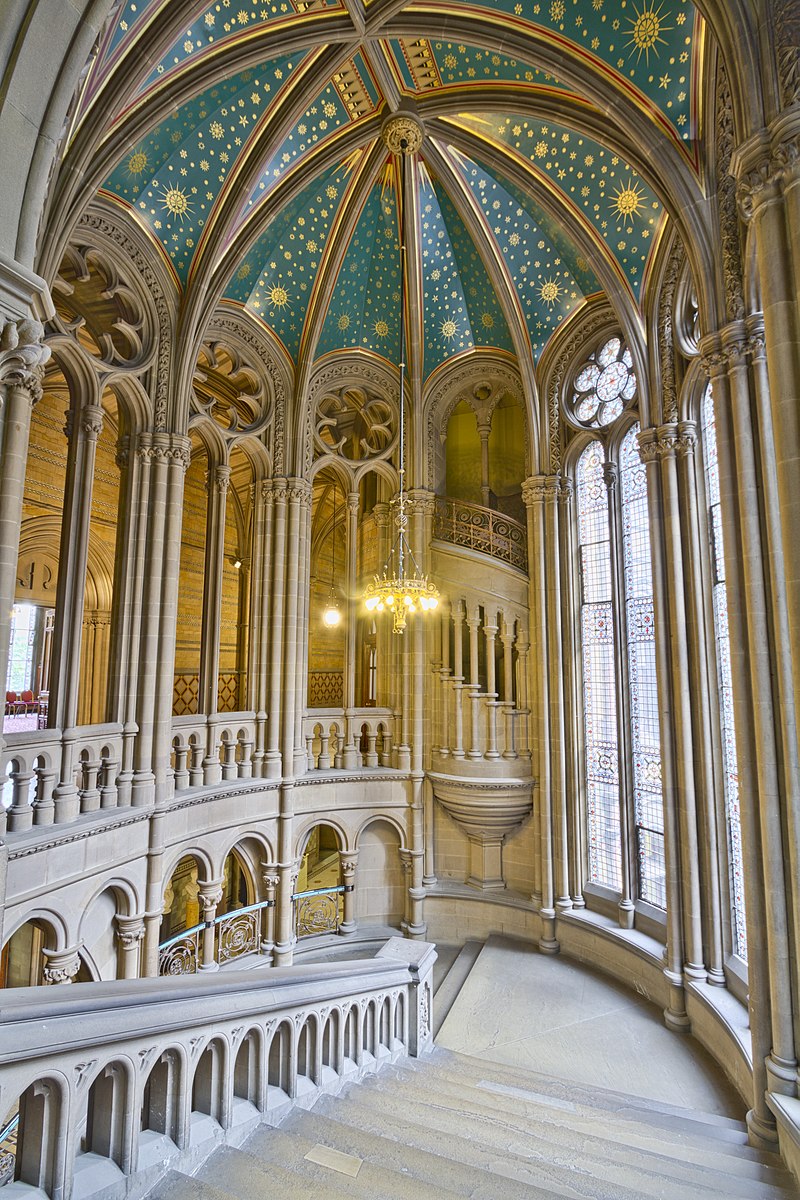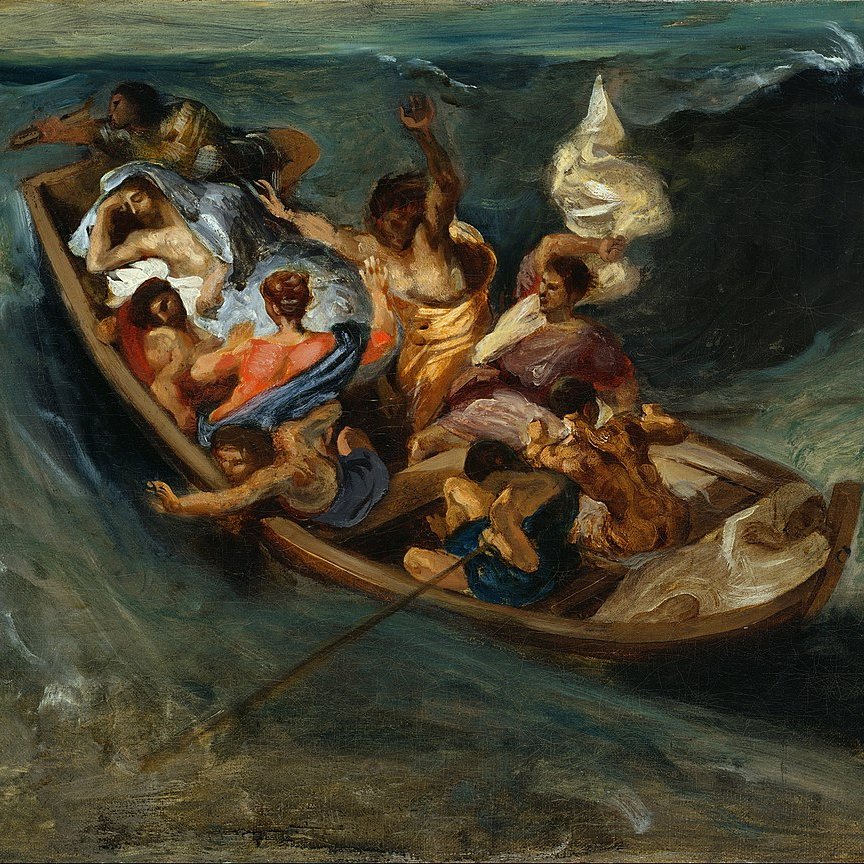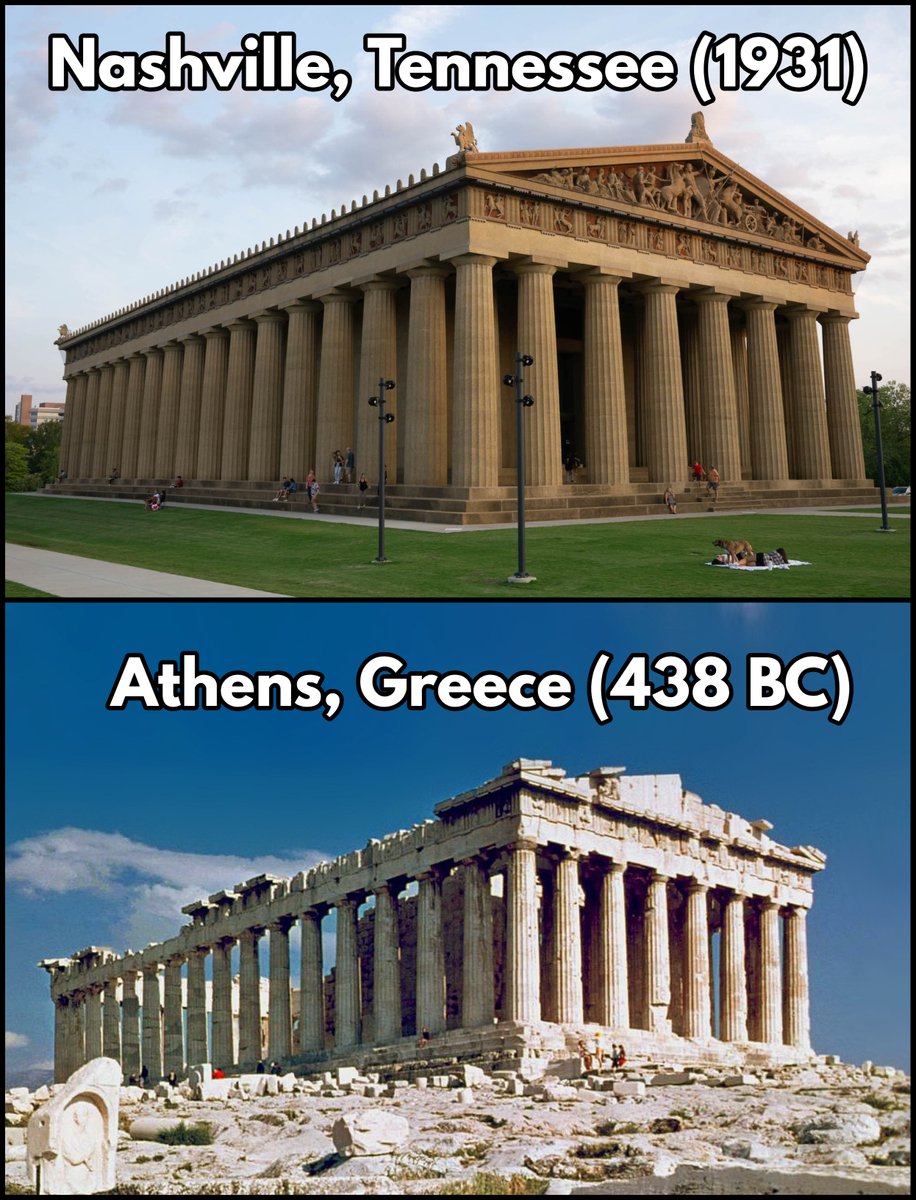During the 19th century the Victorians built everything: churches, train stations, theatres, public baths, banks, bridges, courts, town halls, museums, castles...
But there was no single Victorian style — they mixed together old styles and transformed them into something new.
But there was no single Victorian style — they mixed together old styles and transformed them into something new.
The best place to begin is with their most famous: Victorian Neo-Gothic.
After centuries of slumber Medieval architecture was revived by the Victorians, who filled their buildings, whether houses or town halls, with pointed arches, clustered columns, vaults, and stained glass.
After centuries of slumber Medieval architecture was revived by the Victorians, who filled their buildings, whether houses or town halls, with pointed arches, clustered columns, vaults, and stained glass.

And, in keeping with the Pre-Raphaelite Movement in art (which look to art from *before* the Italian Renaissance for inspiration) the Victorians filled their churches with Neo-Medievial paintings and mosaics.




There was no single style of Gothic architecture, of course, and the Victorians looked to all its versions for inspiration.
The French-style Royal Courts of Justice, more like a fantasy castle than anything else, has a flèche typical of Medieval French cathedrals.
The French-style Royal Courts of Justice, more like a fantasy castle than anything else, has a flèche typical of Medieval French cathedrals.

The Palace of Westminster, designed by Augustus Pugin (who was a major force in the Gothic Revival) is a prime example of Neo-Perpendicular.
Perpendicular Gothic originated in 14th century England as a more austere form of Gothic architecture with an emphasis on vertical lines.
Perpendicular Gothic originated in 14th century England as a more austere form of Gothic architecture with an emphasis on vertical lines.

Tower Bridge, finished in 1894, is perhaps the most emblematic work of Victorian architecture.
Its combination of Gothic design with modern materials and form creates something which, though Medieval in appearance, is unlike anything built in the Middle Ages.
Its combination of Gothic design with modern materials and form creates something which, though Medieval in appearance, is unlike anything built in the Middle Ages.

And then there's something like the Templeton Carpet Factory in Glasgow, directly inspired by the Ducal Palace in Venice — which, thanks to the hugely influential critic John Ruskin, was regarded by many Victorian architects as the world's most beautiful building. 

Then again, the Victorians also built plenty of Neoclassical architecture.
But rather than the purer form popular in the 18th century, closer to actual Greek and Roman architecture, the Victorians preferred the more palatial neoclassical interpretation of the Renaissance.


But rather than the purer form popular in the 18th century, closer to actual Greek and Roman architecture, the Victorians preferred the more palatial neoclassical interpretation of the Renaissance.


There was also the Romanesque Revival, which looked to the rounded arches and robust simplicity of 11th century Norman architecture.
The Natural History Museum in London is probably the best example but, as ever, it was also used for smaller buildings of all types.
The Natural History Museum in London is probably the best example but, as ever, it was also used for smaller buildings of all types.

The Victorians also took inspiration from the Elizabethan and Jacobean architecture of the 16th and 17th centuries, especially the country houses of that time.
There was no style they didn't adopt at one point or another.
There was no style they didn't adopt at one point or another.

Tudor vernacular architecture was also very popular, with its slender brick chimneys and infilled timber framing.
Except that here the timber framing was aesthetic rather than structural, as it once had been.
Did that make it inauthentic? The Victorians didn't care.
Except that here the timber framing was aesthetic rather than structural, as it once had been.
Did that make it inauthentic? The Victorians didn't care.

There was even an Egyptian Revival!
These offices at the Temple Works Flax Mill in Leeds were given all the trappings of the Ancient Egyptian Temple of Edfu, complete with papyriform capitals, hieroglyphic inscriptions, and winged solar disk reliefs.
These offices at the Temple Works Flax Mill in Leeds were given all the trappings of the Ancient Egyptian Temple of Edfu, complete with papyriform capitals, hieroglyphic inscriptions, and winged solar disk reliefs.

The Scots Baronial style, meanwhile, harked back to Medieval castles.
Balmoral is the most famous example, with its conical spires, barrel-shaped towers, jutting turrets, loopholes, and battlements.
Only, it's a royal holiday home rather than a "real" castle.
Balmoral is the most famous example, with its conical spires, barrel-shaped towers, jutting turrets, loopholes, and battlements.
Only, it's a royal holiday home rather than a "real" castle.

But, perhaps even more so than architects, the Victorians were engineers, always pushing modern technology to its limits.
The vast train shed at St. Pancras Train Station, built in 1868, once had the biggest unsupported span of any building in the world.
A marvel.
The vast train shed at St. Pancras Train Station, built in 1868, once had the biggest unsupported span of any building in the world.
A marvel.

One of the defining features of Victorian architecture was its use of modern materials and construction methods: this was an age of iron, steam, plate glass, girders, and industry.
The Victorians were both backwards and forwards looking.
The Victorians were both backwards and forwards looking.

They also filled their buildings with lavish decoration: explosions of colour and pattern, of wallpaper, ceramics, murals, and wrought iron — there was no surface they left untouched.
This sort of wild interior design, like so much else, still divides opinion.
This sort of wild interior design, like so much else, still divides opinion.

Victorian buildings rarely matched the historical styles they drew on.
Rather, they mixed different styles from different eras, throwing together design elements never supposed to be united.
That is what makes it unique — and controversial.
Rather, they mixed different styles from different eras, throwing together design elements never supposed to be united.
That is what makes it unique — and controversial.
Critics at the time (and ever since) have derided this Victorian eclecticism, whereby different architectural styles were thrown together with little regard for their true purpose and form.
For some, the result was messy and inauthentic, a mockery rather than a triumph.
For some, the result was messy and inauthentic, a mockery rather than a triumph.

Consider what had come before: the simpler and more harmonious forms of Georgian architecture.
Compared with that, the often chaotic extravagance of Victorian design, dripping with detail and ornamentation, can feel somewhat overwhelming.
Compared with that, the often chaotic extravagance of Victorian design, dripping with detail and ornamentation, can feel somewhat overwhelming.

But even if Victorian architecture ransacked the past for inspiration, it was also deeply modern.
Elsewhere in the world neo-Gothic architecture was generally more faithful to its Medieval models; Victorian buildings, meanwhile, were totally unique to the 19th century.
Elsewhere in the world neo-Gothic architecture was generally more faithful to its Medieval models; Victorian buildings, meanwhile, were totally unique to the 19th century.

Perhaps the most peculiar feature of Victorian architecture is that they totally ignored the idea that different types of buildings should look different.
Hence their banks look like castles, town halls like cathedrals, factories like palaces, and sewage plants like temples.
Hence their banks look like castles, town halls like cathedrals, factories like palaces, and sewage plants like temples.

It wasn't only because of aesthetics that people like William Morris, writing in the 1880s, described it as an "anti-architectural age."
Such critiques were also social: while these extraordinary buildings were being constructed, millions of people were living in squalor.
Such critiques were also social: while these extraordinary buildings were being constructed, millions of people were living in squalor.

Victorian architecture is a total contradiction, looking both forwards and backwards, beholden to the past but unafraid to meddle with age-old forms, mixing historical styles at will and totally ready to embrace modern technology and methods.
The question is: does it work?
The question is: does it work?
• • •
Missing some Tweet in this thread? You can try to
force a refresh

 Read on Twitter
Read on Twitter






















